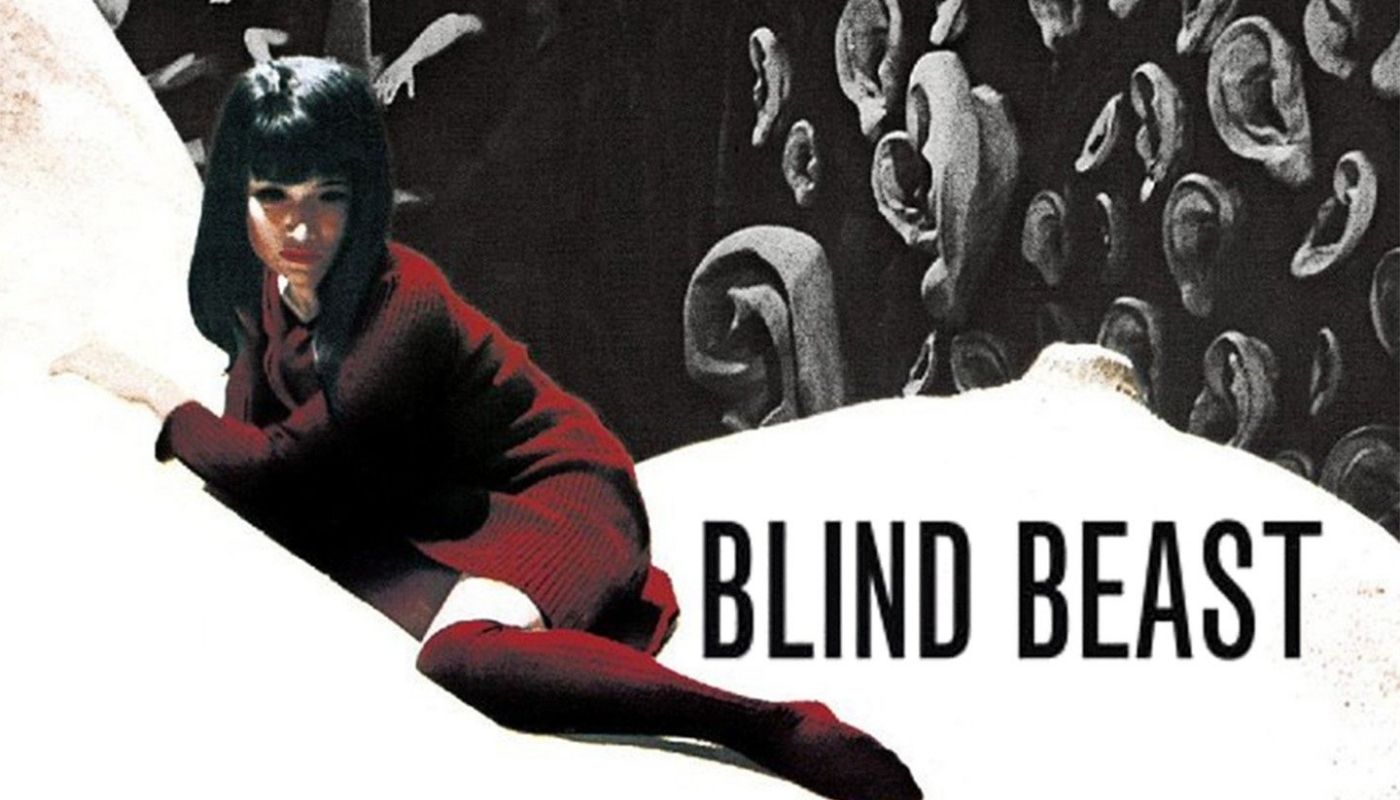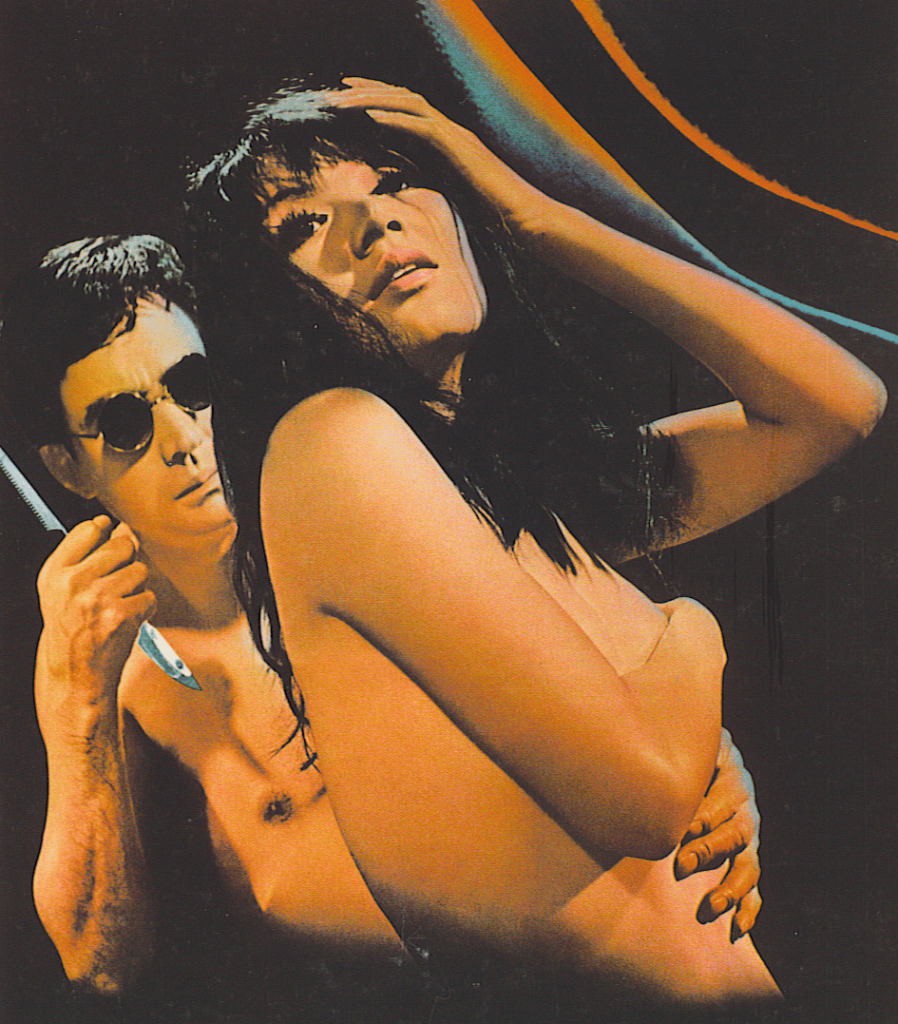

For a long period, I have found myself drawn to extreme cinema. The unapologetic approach to subject matters proscribed in mainstream media has always been more alluring to my cinematic tastes. From Japanese Pinku Eiga to French New Wave, I have tried to explore as much of the genre as possible and, moreover, have seen a varied mix of what makes the category both good and bad. Films Like Irreversible (2002) and the portrayal of its subject matter are held in much higher regard than, say, I Spit on Your Grave (1978).
Films that can take an artistic yet brazen view into a world, which have fallen through the cracks of society, often pique my interest more than general splatter movies. One such film that escaped my attention is the unique tale of sadomasochism that is Blind Beasts.

What Is It?
Blind Beasts (1969) is a Pinku horror/drama directed by Yasuzô Masumura, known for directing such classics such as Hanzo the Razor: The Snare (1973), Manji (1964), and Play It Cool (1970), Yasuzô is most notable for his work in Japanese New Wave cinema. Based on the novel Moju: The Blind Beast, written by acclaimed author Edogawa Rampo (a pseudonym based on the name Edgar Allen Poe) and published in 1931.
With the help of his own mother (Noriko Sengoku), sightless sculptor Michio (Eiji Funakoshi) abducts gorgeous model Aki (Mako Midori) and brings her back to his lair; a warehouse populated by demented art objects that mimic female bodies. It’s here where he forces her to endure a series of sadomasochistic mind games. But, as the weeks wear on, Aki becomes deeply immersed in the erotic torment she’s put through, as she and Michio descend into the animalistic depths of pleasure and pain.

What Worked?
Yasuzô Masumura’s minimalist approach works impeccably for the production. A limited cast and locations give the film an enclosed, bordering claustrophobic environmental energy. Enforced by a phantasmagorical set design, strewn with sculpted, dismembered body parts from floor to ceiling.
An intuitive implementation of light, poignant cinematography, and attention to detail are the stand-out points of this experience. Blurring the line between fantasy and reality successfully depicts the nature of the psycho-sexual story expressively.
Notwithstanding the nudity related to extreme cinema, Blind Beast is one of the least bloody entries to the genre, choosing to put into effect obscuration and an artistic approach to violence. However, this is not to say that the film isn’t disturbing, managing to be shocking through the acts it represents more than the acts themselves.

What Didn’t Work?
The chase scene between Aki and Machio in the warehouse lacks any urgency for a young lady drugged, kidnapped, and having awoken in a strange place. Certainly, more direction to the actress would have been beneficial to the overall flow of the sequence, but this scene does not detract from the overall oppressive feel of the film, nevertheless.
Where Can I Find It?
Blind Beast is available to order on Blu-ray at Arrow Videos webstore. The plethora of features include:
- High Definition Blu-ray (1080p) presentation
- Original uncompressed Japanese mono audio
- Optional English subtitles
- Brand new audio commentary by Asian cinema scholar Earl Jackson
- Newly filmed introduction by Japanese cinema expert Tony Rayns
- Blind Beast: Masumura the Supersensualist, a brand new visual essay by Japanese literature and visual studies’ scholar Seth Jacobowitz
- Original Trailer
- Image Gallery
- Reversible sleeve featuring original and newly commissioned artwork by Tony Stella

Overall thoughts
Blind Beast is an explicit glimpse into unequivocal individualism, unabashed by the taboo subject matter. I enjoyed the film based on how refreshing it is to the extreme cinema genre to not rely on excessive gore to be controversial.
As such, I understand that this film is not going to be to everyone’s taste, especially considering the vivid depictions of the descent into Machio and Aki’s self-destructive relationship that can be tough to stomach. Even with a lack of bloody detail, the character’s enthusiasm towards the sensations, as well as visceral sound effects, reinforce the destructive nature of their affinity.

More from Arrow Video:
Edge of Sanity is a 1989 American slasher horror, directed by French director Gérard Kikoïne in one of his last films in the director’s chair. The story combines elements from… Konnichiwa! Dia Duit! Yo Yo Yo! Straight Outta Kanto here welcoming you all aboard the Nostalgia Train. I’ve said it before and I’ll say it again, the early noughties was,… If you’re a vegetarian and/or averse to the musical genre that is Post-Apocalyptic-Symphonic-Reindeer-Grinding-ScandoFinn-Metal then avert your eyes to the following review. 2018 Finnish shock-rock comedy Heavy Trip is just waiting to… To say that Shinji Sômai is one of the greats of cinema is an understatement. He is quoted as describing his directing philosophy as “humanity observing humanity,” his approach was…Edge of Sanity (1989) Film Review – Anthony Perkins Exploitation Classic
Tale of Two Sisters Movie Review – Classic K-Horror Film Gets Arrow Video Release
Heavy Trip Film Review – Dark Comedy at its Best
Sailor Suit & Machine Gun (1981) Film Review – Carry On My Wayward Gun

Hey there, I’m Jim and I’m located in London, UK. I am a Writer and Managing Director here at Grimoire of Horror. A lifelong love of horror and writing has led me down this rabbit hole, allowing me to meet many amazing people and experience some truly original artwork. I specialise in world cinema, manga/graphic novels, and video games but will sometime traverse into the unknown in search of adventure.



